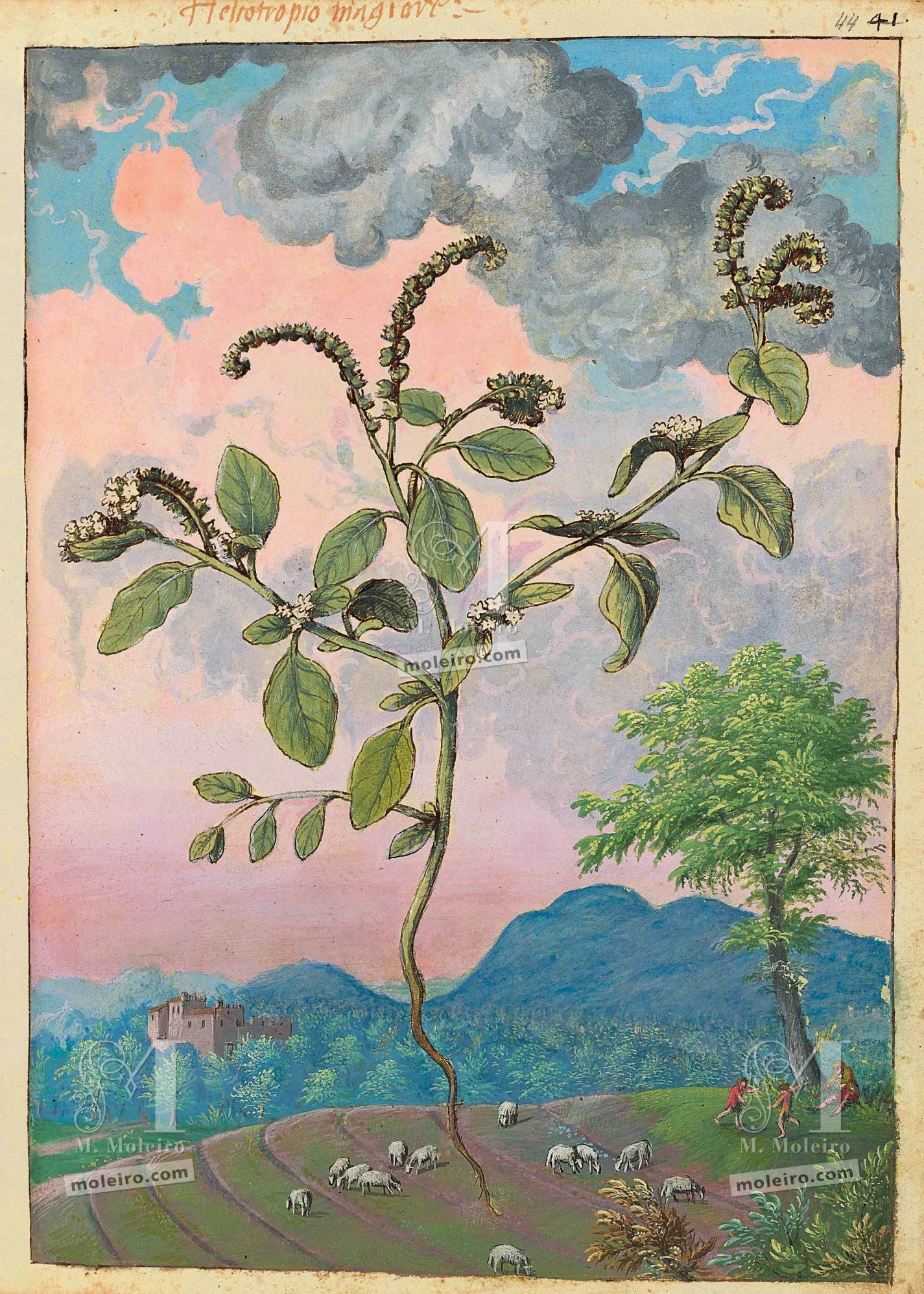The heliotrope bears a flower that looks like a scorpion’s tail and for this reason it is called scorpiuron; and it is called heliotrope because its leaves turn to follow the sun. It has leaves like basil, but more hairy, paler and larger; from its roots it grows three, four and often five stems, with many axils, from which emerge at the top the white or reddish flowers, curved like the scorpion’s tail. Its root, soft and not of any use, grows in rugged places. The decoction of one handful of this herb, prepared in water and drunk, purges bile and phlegm by moving the bowels. Both drunk with wine and applied as a poultice, it is a strong remedy against the scorpion’s sting. Bound around the body, it prevents conception. They say that four grains of the seed given to drink an hour before the onset of quartan fever causes it to end, as three grains do with tertian fever; the seed applied as a poultice dries up warty and pendulant vesicles, the growths of skin called thymuses, and also pustules that form overnight. A poultice prepared with the leaves is useful if applied to the heads of children with heatstroke, and to joints affected by gout and those dislocated; the leaves induce the menstrual cycle and, applied from below, parturition. (f. 43v)
This annual plant grows in abandoned fields and olive groves throughout Italy, France, Spain, Europe and western Asia. It contains alkaloids and its cooking water, as the text says, was used to cure warts and other skin diseases. It has healing properties, can bring fever down and stimulates bile production.
Ramón Morales Valverde
Real Jardín Botánico de Madrid
(Extract from the commentary volume of Mattioli's Dioscorides illustrated by Cibo)
